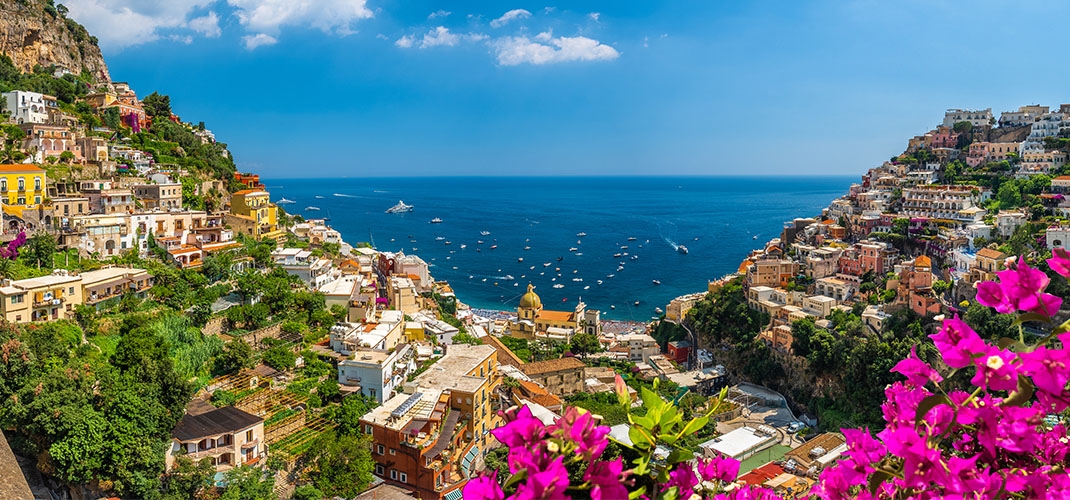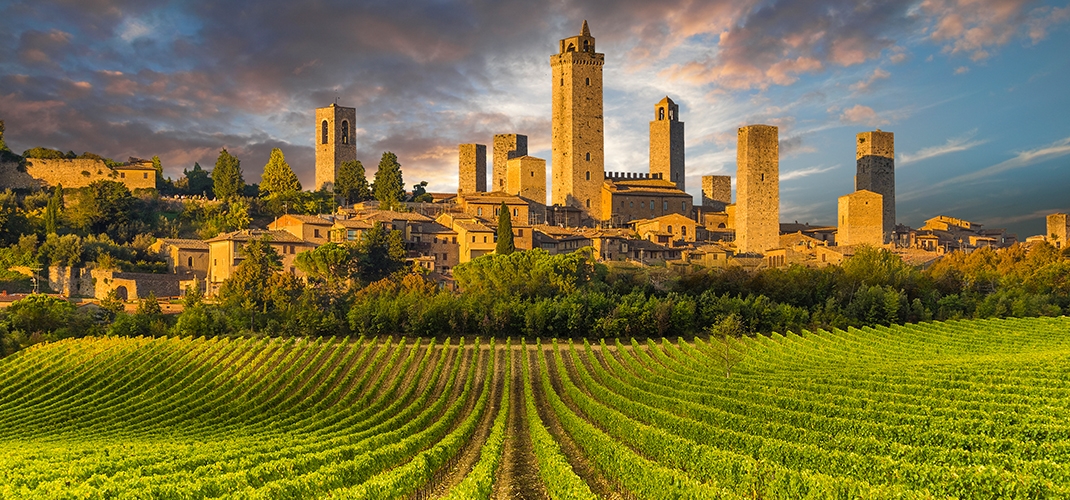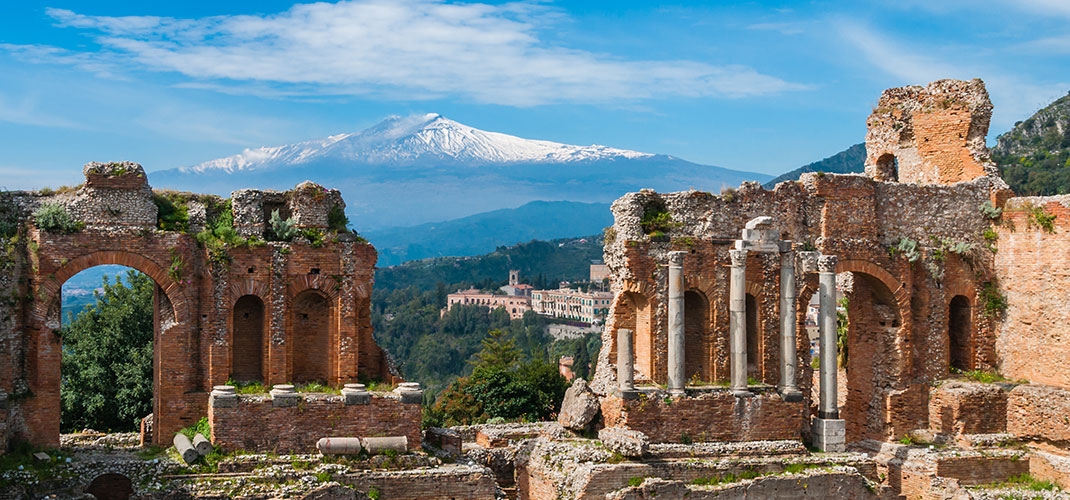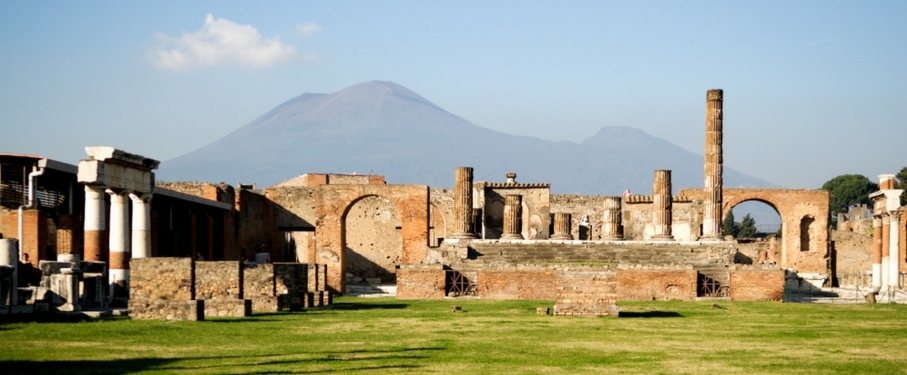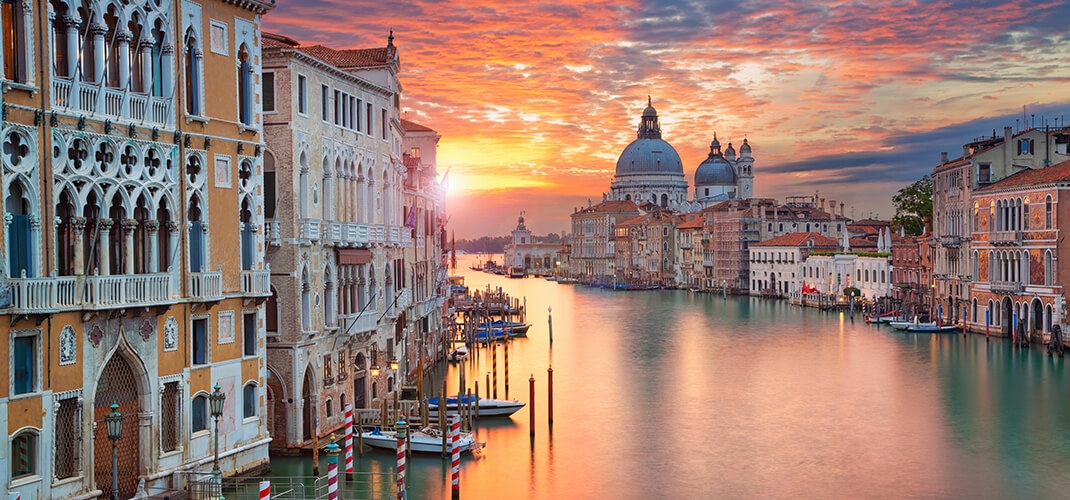Florence
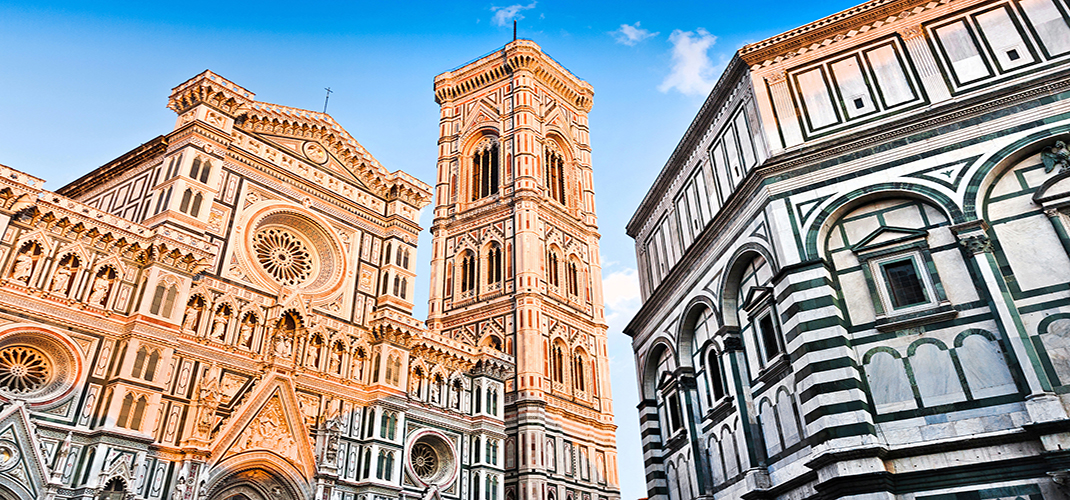
Florence, capital of Italy’s Tuscany region, birthplace of the Renaissance movement and throughout the 12th, 15th and 16th centuries was one of the most important cities of the world. Notable residents of Florence included Machiavelli, Lorenzo Medici, Dante, Michelangelo, Donatello, Galileo and Raphael. One of its most iconic sites is the Duomo, the Cathedral with a terracotta tiled dome engineered by Brunelleschi and a bell tower by Giotto. Florence has some amazing museums and is renowned as one of the most cultural and historical cities in the world, packed full of amazing architecture and places of significance.
Possibly the most celebrated Cathedral in the world, the Duomo as it is known is the jewel in this outstanding city. Constructed in 1436 the astounding front façade wasn’t completed until the 19th Century. Although the interior of the Cathedral is quite bare in contrast, it still speaks of grandeur and has several interesting pieces such as the large clock face and the magnificent Last Judgement fresco that covers the underside of the dome.
Giotto’s Campanile is a true masterpiece of Gothic architecture, constructed by Giotti and finished by Talenti between 1334-1359 it is one of the most renowned designs in the city. Split over five distinct levels, the exterior of the tower features polychrome marble decoration that is also present on the Duomo in brilliant green and pink colours. A true masterpiece of Renaissance art, you will find a plethora of sculptures, artwork and decorated panels covering the tower. If you climb the 414 steps in the tower you will be afforded some of the most fantastic views over Florence and the Duomo.
Completing the trio of buildings associated with the Cathedral of Florence, the Baptistery of St. John sits in front of the main façade of the Duomo. One of the oldest buildings in the city, the Baptistery has been revered and its exterior features the wonderful ‘Florentine’ design that is similar to both the Duomo and Giotto’s Campanile. The three sets of bronze doors are of particular interest and depict various religious scenes and human virtues. The interior has stunning golden Byzantine style frescos covering the ceiling and upper walls and depicts the last judgement and other stories from the Bible and Genesis.
The Basilica of Santa Croce is truly stunning, it features a front façade of pink, red and green marble polychrome panels contrasted with polished white stone. The interior will not disappoint as it houses the Tombs of some of the most influential Renaissance artists and scholars in the world including Michelangelo, Galileo and Machiavelli.
The Uffizi Palace and Gallery is a renowned art Museum and considered one of the most significant Italian Museums in the world. The building itself is a marvel and the inner courtyard features a series of intricate columns and arches that are adorned with marble statues. The interior of the museum houses an immense collection of Renaissance Art from artists including Botticelli, Da Vinci, Titian and Raphael.
Another hugely important museum the Galleria dell’Accademia. This museum contains some Renaissance masterpieces including the original Michelangelo’s David sculpture, one of the most renowned and well known sculptures in the world. The statue depicts the biblical hero David, who was said to be the first King of Israel. Renowned for its fantastic detail and unwavering accuracy of depicting the human form. The museum also houses other sculptures and works from Michelangelo and is split into several different interesting halls.
Spanning the River Arno, the famous Ponte Vecchio has a number of shops that are built into its sides including jewellers and art dealers. It has a decorated history and the plethora of shops that line the main walkway. At the midpoint, the bridge opens up and you will be rewarded with fabulous views down the River Arno. Take a stroll along the Corridoio Vasariano to view the exterior of the Ponte Vecchio and its marvellous house like attachments.
Located on the Southern Banks of the River Arno, the Palazzo Pitti (Pitti Palace) has stood since the 1400’s as a fine example of Renaissance architecture. Once home to Italian Royalty and influential families such as the Medici’s, the Palace now stands as the largest museum complex in Florence. The interior exhibits a myriad of different galleries that are all richly decorated but also contain a host of Renaissance artwork including the Jupiter room with remarkable frescos and the famous Veiled Lady by Raphael. Connected to the Palazzo Pitti you will find the beautiful 16th Century Boboli Gardens. Covering an area of 45,000 square metres, the gardens are some of the largest in Florence and are a true delight to walk through. The Forte di Belvedere stands in the grounds of the Boboli Gardens with commanding views of the southern banks of the River Arno. Constructed in the late 1500’s the fort was meant to demonstrate the power and wealth of Florence during this period.
The Piazza del Duomo is one of the main squares in the city and contains some sublime architecture, where you can see the magnificent Florence Cathedral, Giotto’s Campanile, The Baptistery of St. John and the Loggia del Bigallo. Secondly only to the Piazza del Duomo, the Piazza della Signoria is just as important and contains a myriad of buildings and classical art. The main structure of the Piazza is the magnificent Palazzo Vecchio with its huge clock tower and fantastic statues of David and Hercules. To the left of the Palace is the wonderful Fountain of Neptune and to the right is the Loggia dei Lanzi, which contains some beautiful Renaissance sculptures. Located on the South banks of the River Arno, the Piazzale Michelangelo offers the best views of Florence and the Cathedral in the entire city as it sits high on a hill near the Boboli Gardens and the Palazzo Pitti. Situated in the centre of the square stands a Bronze statue of David and at the edge of the square there is a series of vendors and artists selling their wares. The view from the Piazza is definitely unrivalled!
Situated in front of the main railway station, the Church of Santa Maria Novella is similar in design to both the Duomo and the Basilica of Santa Croce. This is another excellent example of Renaissance architecture where you can see detailed frescos covering the walls and ceilings and artwork from famous artists including Botticelli and Ghiberti.

